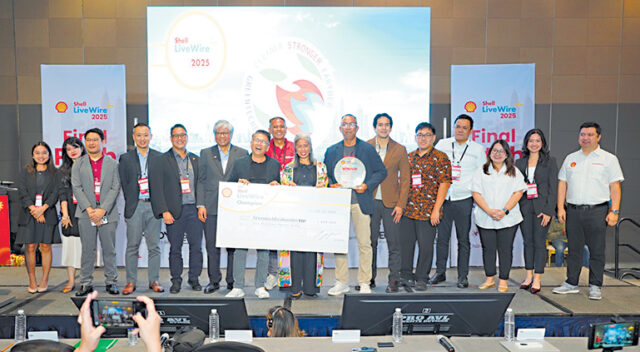Condo glut weighs on home prices

By Katherine K. Chan
SLUGGISH DEMAND and oversupply of condominium units in the market have dampened the growth in prices of residential properties in the National Capital Region (NCR), analysts said, which could persist until yearend as the glut remains.
Joey Roi H. Bondoc, director and head of research at Colliers Philippines, said weak demand for condominium units in the middle-income segment led to the slow growth of housing prices in NCR.
“I think we will attribute that to (the) slower take-up of unsold condominium units in the secondary, ready-for-occupancy (RFO) market,” he told BusinessWorld in a phone interview.
He said about 31,000 condominium units remain unsold in the RFO market, with nearly 60% under the mid-income segment or those worth P3.6 million to P12 million per unit.
Home prices in Metro Manila posted a slower growth of 2.4% in the second quarter from 13.9% in the January-March period and 9.3% in the same quarter last year, the Bangko Sentral ng Pilipinas’ (BSP) Residential Property Price Index (RPPI) showed.
Quarter on quarter, NCR housing prices contracted by 3.6%.
Condominium unit prices also dipped by 0.2%, a reversal from the 11.5% increase a year prior and the 10.6% growth last quarter.
Roy Amado L. Golez, Jr., director for research and consultancy at Leechiu Property Consultants, said buyers’ sentiment and preferences also affected the growth of condominium prices during the period.
“The slowdown in year-on-year growth in condominium prices in NCR from Q1 2025 (13.9%) to Q2 2025 (2.4%) can be attributed to the oversupply, cautious buyer sentiment, and possible shift in buyer preferences,” he told BusinessWorld in an e-mail. “Buyers are responding with a more critical examination of their needs before making any property purchases. There are less instances of speculative purchases in the market today for NCR.”
Mr. Golez said secondary or pre-owned units sold at lower prices are also cornering some of the demand for housing.
“Note that the RPPI doesn’t cover only primary units from developers — secondary units are competing for demand, and motivated sellers sell at a discount so they can liquidate their properties,” he said.
“With the low-yield environment, some owners are finding it more attractive to flip their condominium investments and divert to alternative instruments. This can also include sales of condominium units at discounted prices that developers are offering to move their unsold inventory.”
He added that developers’ project launches in Metro Manila have slowed as they still have existing inventory.
Claro dG. Cordero, Jr., director for Research, Consulting & Advisory Services at Cushman and Wakefield, said the past quarters’ strong performances could have amplified the price growth slowdown, adding that the 13.9% growth in the first quarter was “somewhat difficult to match.”
“That doesn’t mean though that the decline was very sharp,” he added.
Mr. Cordero also linked the oversupply of condominium units to the ban on Philippine offshore gaming operators (POGOs), whose workers previously resided in such properties.
“(A) lot of the excess inventory is due to the fact that the units were vacated by POGOs… So, since the POGOs left late last year, a lot of them were brought back to the market,” he said.
Meanwhile, expensive financing and high mortgage rates are also affecting demand for condominium units in the rental market, Mr. Bondoc said.
He said the mortgage rate for a five-year term ranges from 7.7% to 7.8% and would cost more if longer than five years.
“So, the rental market is experiencing sluggishness at this point… meaning if I buy a condominium unit (and) once it’s turned over, will I be able to rent it out to a BPO employee or a foreign employee?” Mr. Bondoc said.
“Unfortunately, the rental market is slowing in Metro Manila right now because again (there are) a lot of unsold condominium units (and) owners are imposing lower rental rates,” he added.
BSP data showed that the median price for all housing types in the Philippines stood at P3.4 million in the second quarter. Condominium units had a median price of P3.8 million, while houses cost around P3.1 million.
Houses in the NCR were the most expensive at a median price of P7.01 million, while houses in other areas in the Philippines were the cheapest at about P2.7 million.
SLOW TAKE-UP TO PERSIST
Mr. Golez said condominium sales have improved as of the third quarter amid lower interest rates.
“Now… we’re seeing renewed buyer activity in the (Metro Manila) condominium market,” he said. “Lower interest rates may be fueling this rise in demand, as well as discounts and promos from developers.”
The central bank’s policy rate currently stands at 4.75%, the lowest in over three years. It has lowered benchmark interest rates by 175 basis points since kicking off its easing cycle in August 2024, and BSP Governor Eli M. Remolona, Jr. has left the door open to more cuts in the coming months to help boost domestic demand due to a softer economic outlook as a widening corruption scandal involving government infrastructure projects has affected business sentiment.
However, condominium price growth, particularly for secondary units, in NCR will likely remain flat but could recover in the medium term once supply levels become more manageable and rental yields improve, Mr. Golez said.
“The pace of recovery will depend on how quickly developers clear unsold stock, whether buyer sentiment improves, and when rental demand picks up. Until then, we can expect subdued price growth.”
Mr. Bondoc said tepid demand for condominium units in Metro Manila will likely persist until yearend as the number of unsold units remains significant. However, developers’ RFO promos and discounts could help attract buyers.
“We saw that there was an improvement in take-up of condominiums in (the) second quarter this year because of promos and discounts offered by developers. But let’s see if that will be sustained. But in terms of rental prospects and appetite for condominium units for rent, we’re likely to see slower demand for the remainder of 2025,” he added.
He said the “strong” demand seen for residential properties outside Metro Manila is making up for the slowdown seen in the capital.
“I think what’s offsetting that is still a strong take-up outside of Metro Manila. So, that has been offsetting the lukewarm appetite for condominium units in the capital region at this point. That’s still a positive for the market that we’re seeing.”
“Buyer interest is increasing for housing options outside NCR, especially for landed housing. Developers are responding in kind by continuing to develop townships outside NCR, capitalizing on infrastructure improvements and lifestyle appeal,” Mr. Golez added.
In areas outside NCR, home prices rose by 11.5% in the second quarter, faster than the 3% growth logged in the first quarter and 7.2% the previous year, BSP data showed.
Mr. Cordero said they see home prices rising in the near term, particularly in the pinch areas in emerging regions such as Cebu.
“That’s driven by sustained demand for larger living spaces and more horizontal developments as well as regional migration and infrastructural enhancements.”













